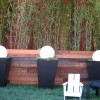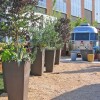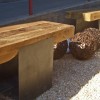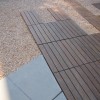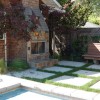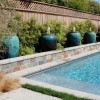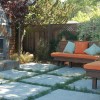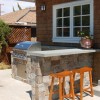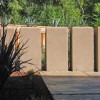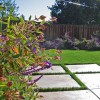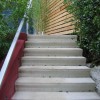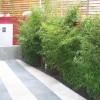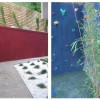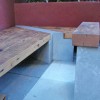Living Green in Outdoor Spaces
Don't Mow Your Lawn
Prevailed upon by a technocratic society, people are frequently alienated from nature and social interaction. As such, rumor has it that ecological outdoor living spaces are greatly coveted safe havens. The sky’s the limit; an outdoor living space or room can take on the functions of any interior home space within the constructs and limits of any locale. This is green architecture at its best; it brings the residents and their visitors' mental, emotional and physical conditions back into sync with nature.
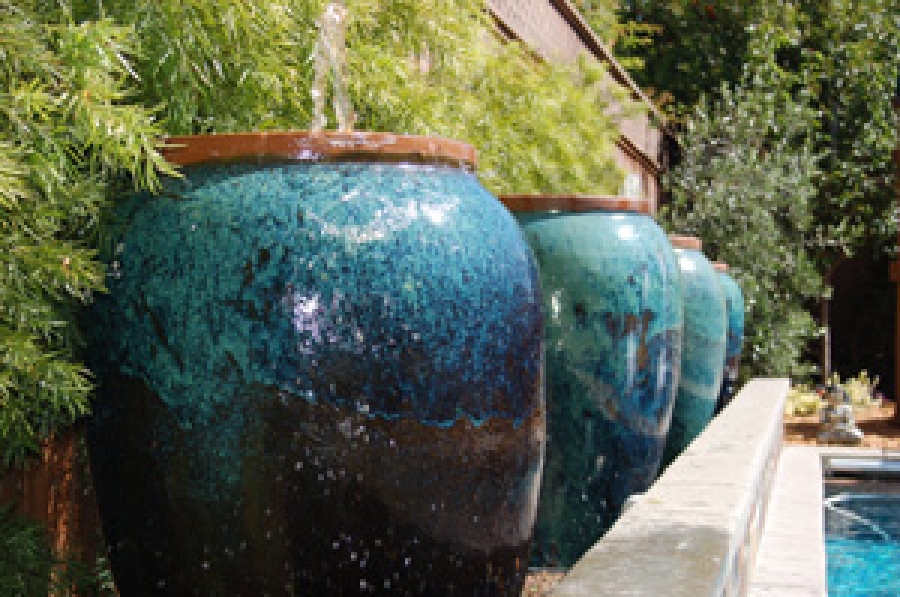 Credit: Shades of Green Landscape Architecture
Credit: Shades of Green Landscape Architecture
Ive Haugeland and Tyler Fishman Manchuck, both landscape architects and principals at Shades of Green Landscape Architecture in San Francisco, work together to create new outdoor living spaces that are simultaneously beautiful and green.
Getting Started
“Vertical elements are necessary to create additional rooms within the whole landscape, such as: trellis structures, porches, trees, piers, fences and retaining walls.”Tyler Fishman Manchuck, Shades of Green Landscape Architecture
“Choosing green materials is tricky for us; we weigh several different factors into our decision,” says Haugeland. Some of the factors they weigh are: how to reduce transportation pollution by buying local materials, how much energy was used to produce the materials, and how durable and long-lasting the product will be. From time to time, making a selection is difficult because one factor contradicts another. “We have some seriously heated debates in our office while trying to decide which product is indeed the greenest material we can find for a particular type of application,” says Manchuck.
Shades of Green has discovered that, even with the huge amount of research that goes into each design, ultimately it is trial and error that guides their progressive knowledge about how to create landscaping scenes which are simultaneously gorgeous and sustainable. “We are always watching our gardens grow and how well they last; it’s a process of trial and error when determining which materials we will use again on the next project,” says Haugeland.
Water Conservation
Water conservation can be either an action, technology, or process implemented to reduce water loss. Shades of Green aims to limit the amount of lawn they incorporate into the landscape, because grass takes the greatest portion of water to maintain, especially in arid environments. However, when they do add grass, Shades of Green plants a variety that does not need much water nor much mowing. In lieu of grass, they suggest a meadow with wildflowers, poppies, and other plants which have seasonal interest, so the owners do not have to mow the lawn (although they can if they want to).
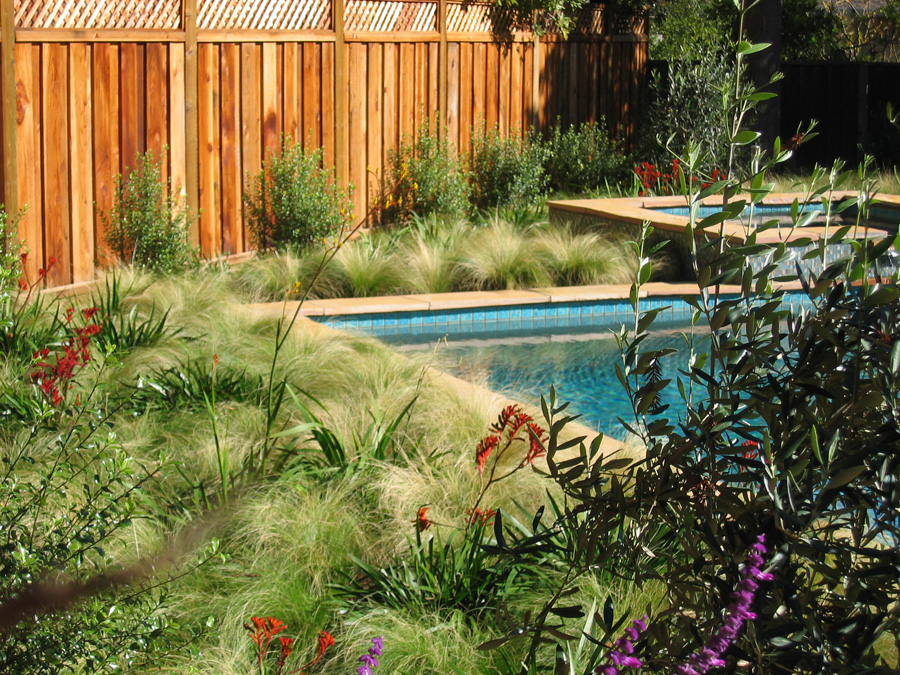
Shying away from certain types of verdure, these designers say that another key to water conservation is selecting low-maintenance trees, shrubs, and flowers which are appropriate for the site’s ecology. “In particular, we are trying to get our clients comfortable with plantings other than grass,” says Manchuck. For example, they use plantings that have strong drought-resistant characteristics, such as: Australian and African plants, cacti, and lots of succulents. “We are really excited about succulents and about how many new and fresh ways we can incorporate them into the landscape,” says Haugeland.
Irrigation
“We are greatly in favor of installing a passive irrigation system that goes under the lawn as a pan reservoir,” says Manchuck. The pan reservoir collects rainwater as it passes through the top layers of the gardens, and then is cycled up again across the plantings in the irrigation system. Cost sometimes bars them from installing the passive system, so Shades of Green often resorts to using a satellite controlled irrigation technology that at least limits the act of over-watering.
Rainwater harvesting systems can be used for irrigation and graywater household uses, local regulations permitting. Cisterns and a wide variety of storage tanks are available, including a tank that forms a vertical wall or fence. “When designing a cistern, we have to calculate how much rainwater will likely be caught and then how much water is needed for surrounding plantings before we know whether this will be a successful system or not,” says Manchuck.
Design Concepts
Shades of Green suggests that it is primarily important to work with the existing structures and materials found in one’s backyard in order to reduce waste. Even broken up concrete paving can be turned into funky shaped pavers or retaining walls. An existing fence can be covered with vegetation so that its boundary is retained but its tattered image concealed. Reusing existing materials in new forms or fashions, such as putting new cushions on existing furniture, also enlivens the space. Planting a zigzag pattern of vegetation on a sloped surface retains erosion in a gentle, green manner.
"Definitely go with the resources you already have and try to stay local with your purchases." Ivan Haugeland and Tyler Fishman Manchuck on designing sustainably.
“Vertical elements are necessary to create additional rooms within the whole landscape, such as: trellis structures, porches, trees, piers, fences and retaining walls,” says Fishman Manchuck. Vertical elements help to create the necessary privacy.
Retaining Walls and Pervious Paving
Retaining walls are important vertical elements in the garden that can be constructed with a variety of green materials. One green solution is gabion walls, constructed of galvanized steel caged boxes filled with post-industrial ex-quarry rubble waste. When Shades of Green designs retaining walls, they often paint them with bright colors that coordinate with plantings that are included in the surrounding landscape. They discovered a natural hydraulic lime pigment that is environmentally-friendly because it does not off-gas harmful fumes.
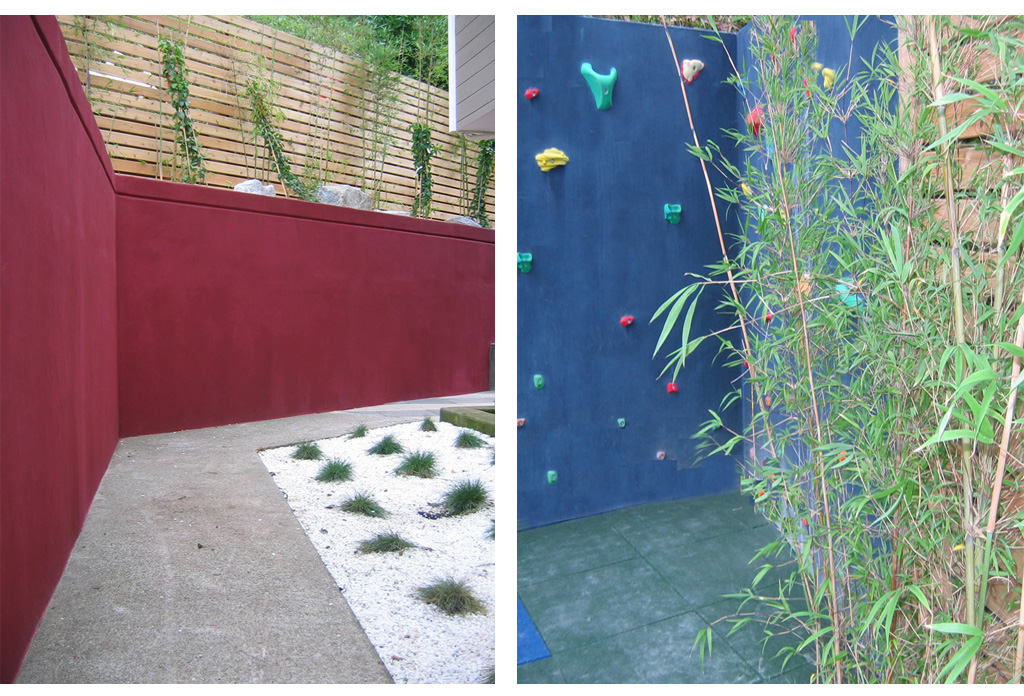
Minimizing sealed surfaces assures rainwater makes its way evenly throughout the garden. One of the most common ways to allow for rainwater to permeate through hard surfaces is to install pavers between which grass can grow. “The material used for these pavers can be concrete or other materials that may have recycled content within. We usually separate the pavers by 6" and seed with a native grass variety that spreads like a lawn, but doesn’t grow tall,” says Haugeland.
Choose Recycled and Locally-Produced Materials
Wood and metal are among the easiest materials to recycle, so Shades of Green prefers these materials for fences, decks, furniture and other miscellaneous items. Haugeland and Manchuck comment on how convenient it is in their corner of California to purchase recycled materials and reclaimed wood from building resource centers. On the same note, they frequently commission local artists to build landscaping furniture and décor with recycled steel and reclaimed wood materials. When buying new wood, however, it should be certified by the Forest Stewardship Council (FSC) to lessen the impact of deforestation.

As for other miscellaneous materials, buying locally is an added bonus on the green scale. Recycled glass tiles are popular, though pricey. Adding fly ash to new concrete pours incorporates post-industrial waste back into new products. One of the most outrageous design features that Shades of Green has incorporated is mulch made from recycled and tumbled glass and mirrors. Fortunately for Shades of Green, there is a manufacturer in their area that produces this type of mulch.
The Hearth and the Pool
Fireplaces magnetically gather people together no matter how cold the social atmosphere. “There are eco-friendly fire burners filled with ethanol, which is the cleanest burning fuel on the market for fireplaces,” says Manchuck. Fireplaces, heat strips, under-floor heating, and converted conservatories all create outdoor living spaces that are inviting spaces for more months of the year than just the summer.
Simply covering a heated swimming pool conserves a significant amount of energy. There is also solar powered technology to heat the swimming pools. The most radical water solution, however, is a natural swimming pool that filtrates water without added chemicals. Similar to a pond or wetlands, this kind of pool takes up more space than a traditional swimming pool. “We have found that the natural swimming pool takes a special type of client,” comments Haugeland.
The Finishing Details
Lighting devices, mist machines, and artwork in the garden are details that finish out the design of an outdoor space. Lighting is essential to creating a warm and inviting space that can be used at night as well as during the day. When solar lighting is not a viable option, consider LED bulbs, which conserve electricity more than any other bulbs available for outdoor lighting. “Whenever possible, these devices, such as the lighting fixtures, should be concealed during the day,” says Haugeland.
Visualizing a stage for meaningful events with family and friends while at the same time considering how it can be accomplished in a green manner is becoming more and more of a reality. “Definitely, go with the resources you already have and try to stay local with your purchases,” says both Ive Haugeland and Tyler Manchuck, of Shades of Green Landscape Architecture.
The jazz lyrics, “DON’T MOW YOUR LAWN…You can sow it but don’t mow it, blur those property lines… set your Lawnboy free!... don’t waste gas on grass… if you get a draught, just let it hang out…DON’T MOW YOUR LAWN,” written by songwriter and performer Ray Anderson with Jackie Raven, indubitably sets a fun tone for creating green landscapes for those who pioneer outdoor living spaces.

Stephanie Aurora Lewis
Stephanie, an NCARB registered architect and LEED AP, draws upon her studies in architectural history and theory from Sarah Lawrence College and her master’s degree in architecture from The Ohio State University. Providing copy for publications and performing marketing work for the construction industry, Stephanie works as an independent freelancer from Columbus, Ohio.
Website: greengaloredesigner.blogspot.com/
